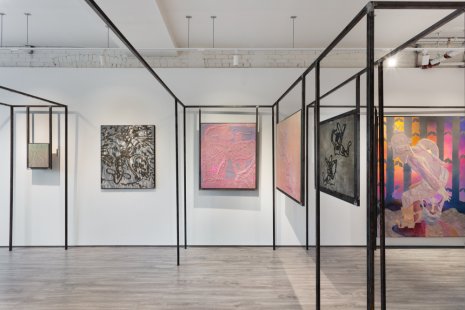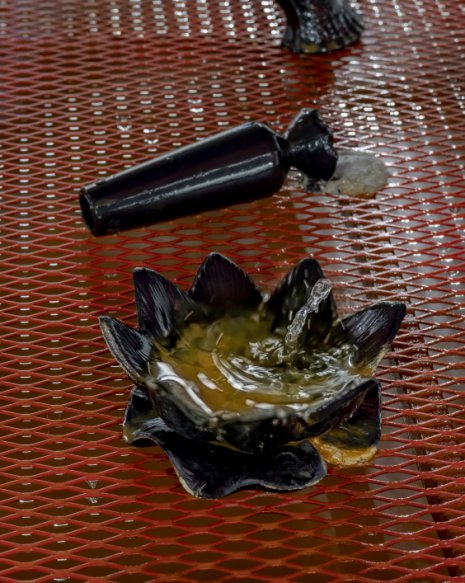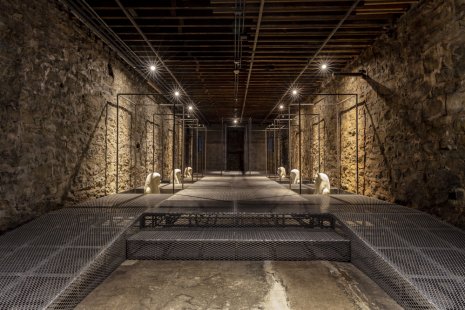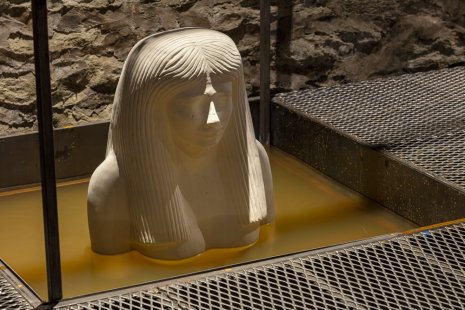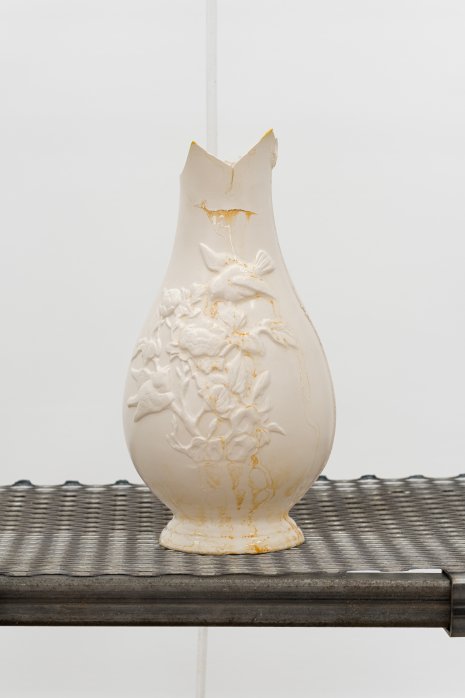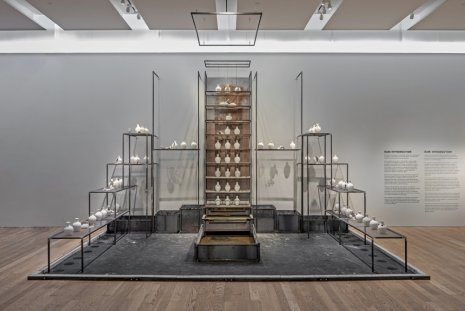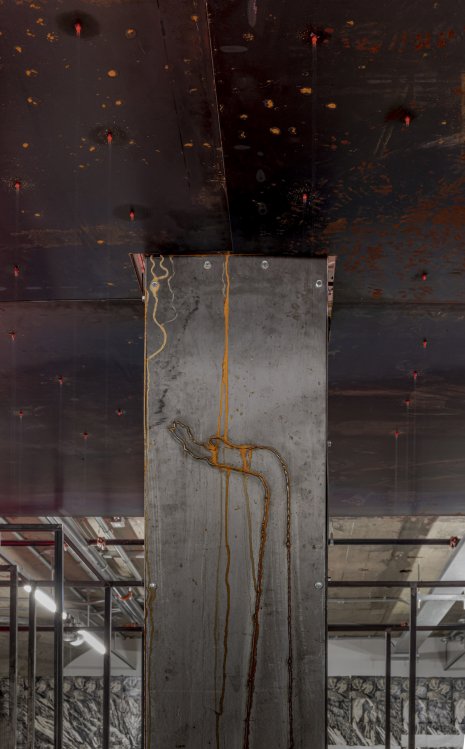In Azza's Words...
Early on, I was drawn to materiality’s power to evoke history, seen in Echoes to Omega. This piece explores history’s remnants through a platform of expanded steel, with submerged clay replicas of Lady Sennuwy, a statue excavated from Nubia. Using robotic technology to mill digital replicas bridges ancient and contemporary narratives, revealing how rituals of the past shape our understanding of life and death. By layering materials and scents like Sandaliya, used in Sudanese burial rites, I connect personal memory to universal themes of mortality.
In Begin in Smoke, End in Ashes Pt. II, I reflect on decay and rebirth. This installation uses vessels and steel structures with objects that dissolve slowly in rusted water, creating a ritualistic space that blurs life and death, permanence and dissolution. The layers of rust and scent, such as bukhoor and Sandaliya, evoke both ritual cleansing and a return to earth. Each component embodies life’s ephemeral nature, confronting viewers with decay’s slow, silent process.
My brother’s death in 2017 profoundly impacted my practice. Inspired by his dedication and the leap he took in his final work, a distant fire, I’ve continued to examine themes of mourning and memory. His artistic growth influences me personally and professionally, leading to projects like fire is love, water is sorrow, a collaborative exhibition integrating his paintings with steel armatures I crafted. Within this exhibit, I included machine-learned digital images in his style, marking my first exploration of using technology to envision an interrupted life.
The Edifice of Tirhaga is my most significant recent project and short-term goal. This public installation transforms my brother’s 1993 Nissan pickup truck into a mobile mortuary temple, merging personal loss with cultural rituals. Drawing from ancient Nubian and Egyptian mummification practices, Sudanese Muslim burial traditions, and lowrider culture, the truck becomes a traveling tribute, filled with his music, voice memos, and candy-colored visuals. Through this project, I explore cultural memory, the politics of death, and how personal grief can become public mourning.
The process of creating The Edifice of Tirhaga led to my long-term goal: developing an autonomous AI to continue my brother’s creative vision. In our last conversation, he spoke of strides in his practice and excitement for the future. His passing inspired me to explore AI as a means to imagine his potential trajectory—an intensely personal project using technology as a bridge to honor his legacy. This “digital rebirth” builds on my work with machine learning, aiming to capture the essence of an artist’s process and the unfulfilled potential of a life taken too soon.
My installations also interrogate power structures and their impact on marginalized communities, an idea central to works like that which trembles wavers, where Egyptian symbols of power represent cycles of construction and erosion. Each piece is a study in duality, echoing the paradoxical nature of systems that appear solid yet are inherently fragile.
In the short term, I am completing The Edifice of Tirhaga and bringing it to public spaces, moving my work beyond institutional walls. This mobile sculpture invites people to engage with grief, remembrance, and resilience, breaking formal barriers. I aim to see how this piece resonates across communities and fosters dialogue on shared experiences of loss.
Looking ahead, I hope to push my interdisciplinary practice further, merging ancient traditions with emerging technologies to explore preservation, remembrance, and mourning. Projects like Final Fantasy, which juxtaposes ancient Egyptian texts with digital motifs and references to role-playing games, blend ancient and futuristic, mythological and digital. This exploration extends into AI, where I hope to expand the boundaries of art, technology, and memory. My goal is to build a bridge between past and future, creating art about life’s impermanence and the legacy we leave.
Ultimately, my practice centers on personal experience and collective memory. Through installations that fuse the sacred and the everyday, I invite viewers to reflect on their place within larger cycles and narratives, questioning what endures when all else fades.


